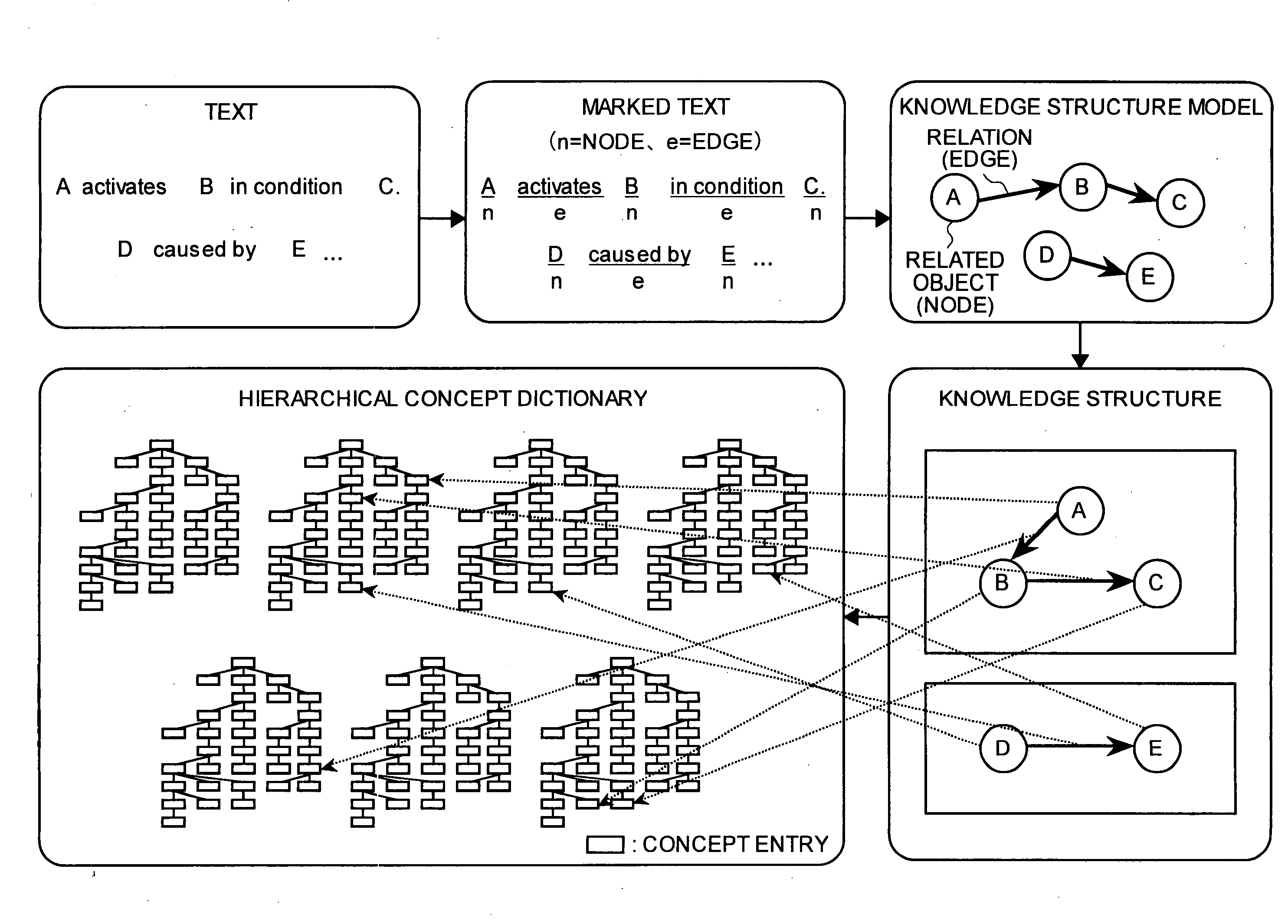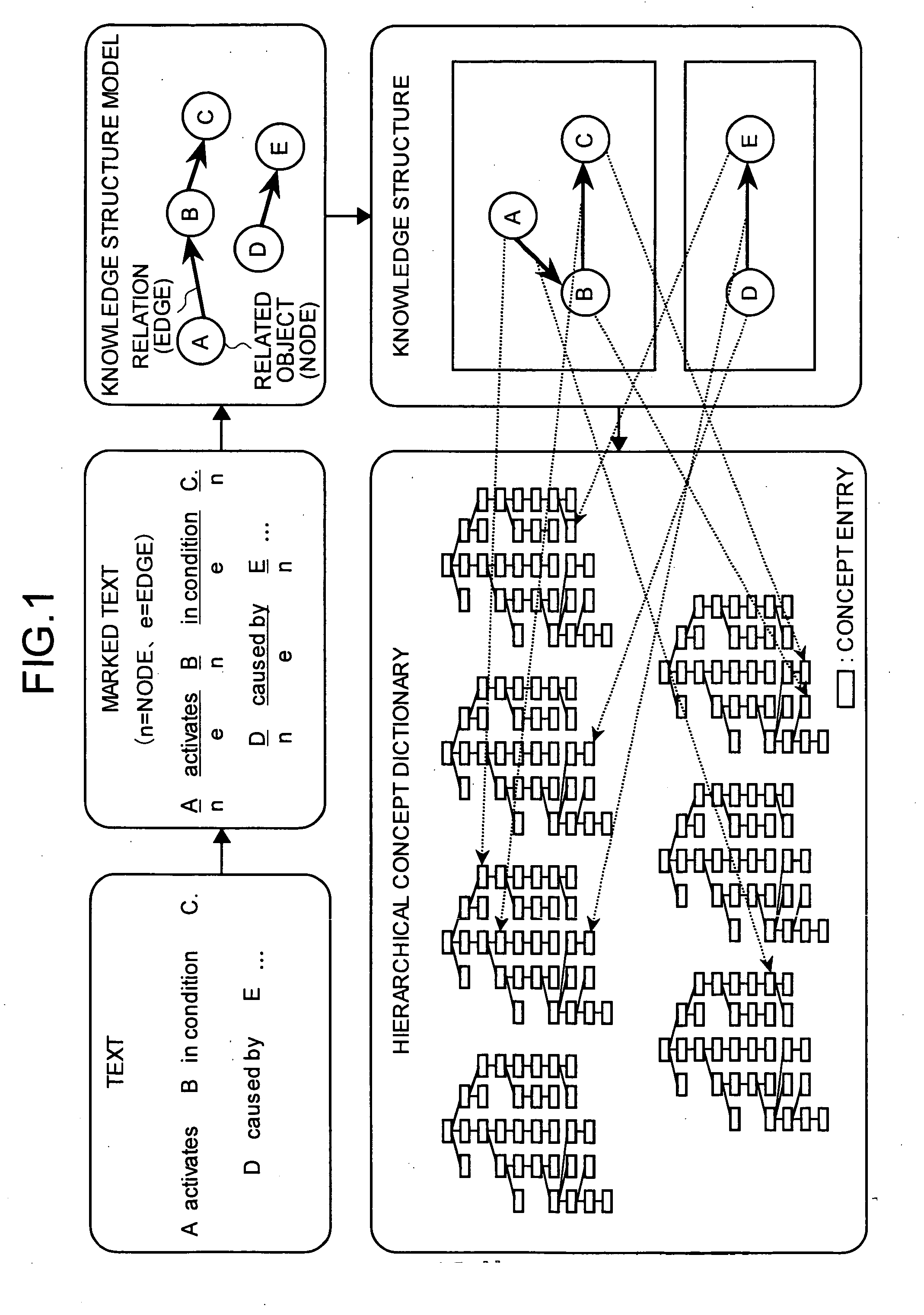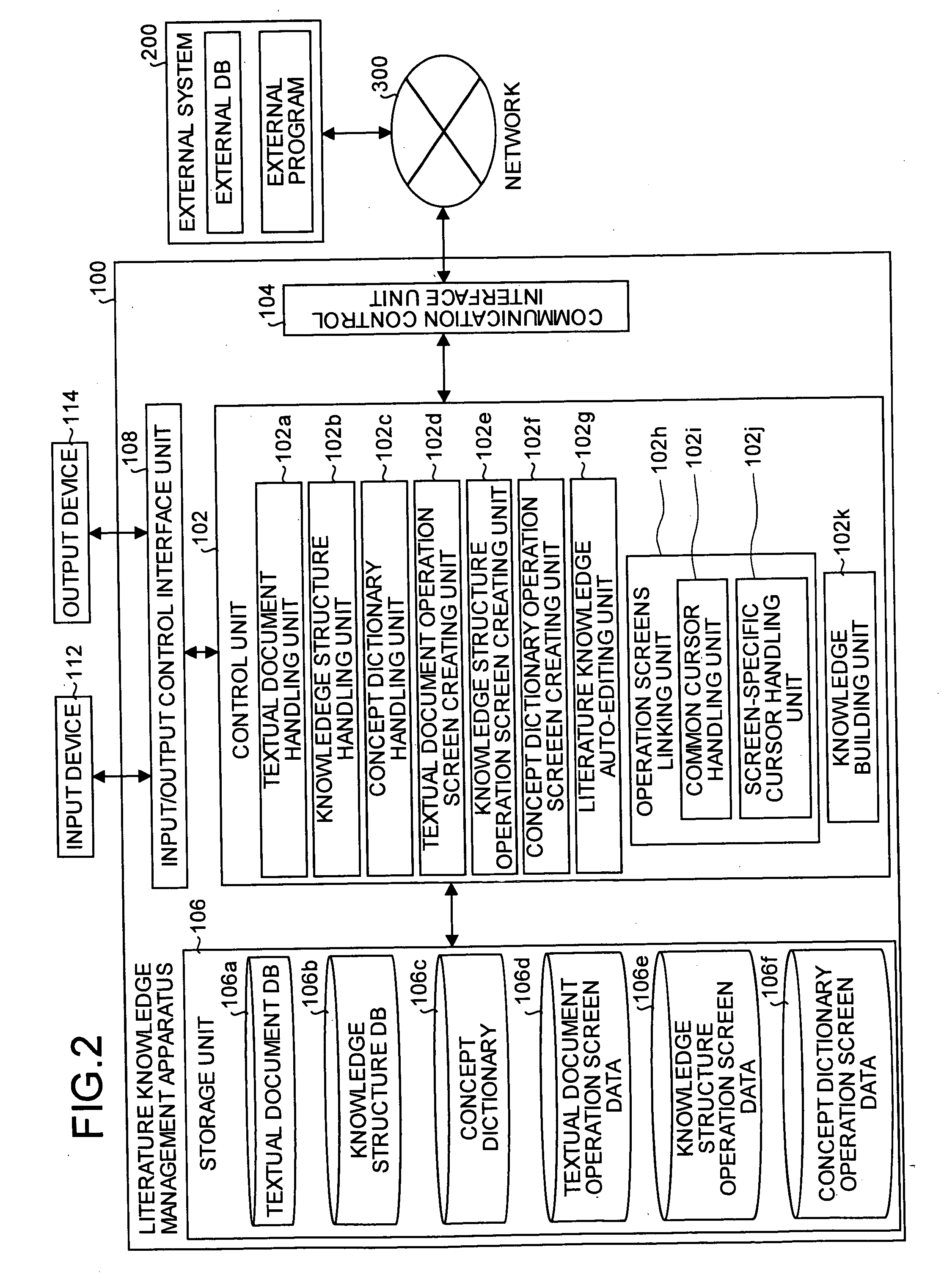However, all these technologies lacked a comprehensive
system for extracting useful knowledge from the collection of data (for instance, textual document databases) from a large volume of literatures.
However, no suitable tool was available for creating from the knowledge extracted from the textual documents a
knowledge structure (for instance representing knowledge as a graphical representation constructed from nodes and edges), and a hierarchical concept dictionary corresponding to the knowledge structure.
However, there was no
system in place to realize these processes comprehensively.
However, the I / O interface or
operability of each of these tools being different, simplification or efficiency of operation screens of these tools was practically impossible.
In other words, the user had to enter data separately for each tool and this led to the possibility of erroneous inputs, etc.
Another undesirable outcome was failure of knowledge to reflect in other tools or failure of creation of knowledge in other tools leading to enormous
delay in the creation of the knowledge structure.
Further, if knowledge was modified, deleted, or added in any of the operating tools such as the text, knowledge, or concept dictionary, the knowledge had to be manually updated in the other tools as automatic editing was not possible.
Besides, no knowledge structure was automatically created using similarity of literatures.
Therefore, the conventional
system posed several problems both for the user of the knowledge and the administrator and hence was inefficient.
However, though the researchers need to retrieve stored information by accessing a plurality of databases using these
information processing technologies, the conventional
information processing technologies are limited in that there is no comprehensive system for improved recurrence rate (an index showing how much percent of the search result contains the relevant cluster) while maintaining the search precision (an index showing how much percent of the search result is relevant).
Further, conventional retrieval systems based on the
vector space model cannot distinguish if a word has more than one conceptual meaning or if a word appears in two different documents.
Consequently, the search result that the conventional retrieval system throws up is garbage for the most part and is low on recurrence rate.
Thus, the conventional system posed several problems both for the user of the knowledge and the administrator and hence was inefficient.
It could prove to be a monumental task involving a lot of time if an exhaustive and accurate
semantic dictionary containing the latest terminology is to be prepared.
However, the conventional
semantic dictionary had to be prepared manually and it proved to be a laborious process involving an enormous amount of time and effort to create an exhaustive and highly accurate one containing the latest terminology.
The category dictionary, again, needs to be manually prepared, and therefore this too involved an enormous amount of time and effort in order to prepare an exhaustive and accurate category dictionary.
In this case, the check of the information of dictionary needs to be manually prepared, and therefore this too involved an enormous amount of time and effort in order to check the exhaustive and accurate information of the dictionary.
Thus, the conventional system posed several problems both for the user of the literature
database search service and the administrator and hence was inefficient.
Since the conventional semantic dictionary was mainly created / updated manually, there were many inconsistencies in the contents of each entry that was registered in the dictionary.
Thus large system
noise was generated when the information was extracted.
Therefore, the conventional system posed several problems both for the user and the administrator and hence was inefficient.
As a result the
end user does not have a means to acquire the reliability directly since the reliability of each operation changes with every
text processing technique.
In other words, it was difficult to search directly as to what term was extracted and from which document.
In the conventional method, the word of the same representation was totaled as a same category and consequently the meaning of a word that changed contextually could not be handled correctly.
After having performed the 2-D map analysis, if the number of category elements increased, it was difficult to search for a particular category element.
When the user had to analyze many elements or when there were many methods for analysis, considerable time was expended in interactive process.
When large-scale concept dictionaries (several tens of thousands of categories) were used, it was difficult to look through or search through the concept items by using a 1-dimensional
list.
Thus, conventional system posed several problems, both for the user as well as the administrator, and as a result the system proved inconvenient and inefficient.
The existing
text mining system poses a basic problem on the
system structure due to which the assigning method of the concept and the assigning method of a view at the category is limited.
Since the concept, which is not defined in the
synonym dictionary and the category dictionary, cannot be handled, a new concept cannot be created.
However, in both the cases an excessive concept may go into the view.
Since the conventional system can use only the concept and category which were prepared before hand according to the usage situation, it posed a problem where the concept or a view could not be assigned flexibly, regardless of the category.
As a result, the conventional system was inconvenient for the user as well as the administrator of the system, and utilization efficiency deteriorated.
 Login to View More
Login to View More  Login to View More
Login to View More 


